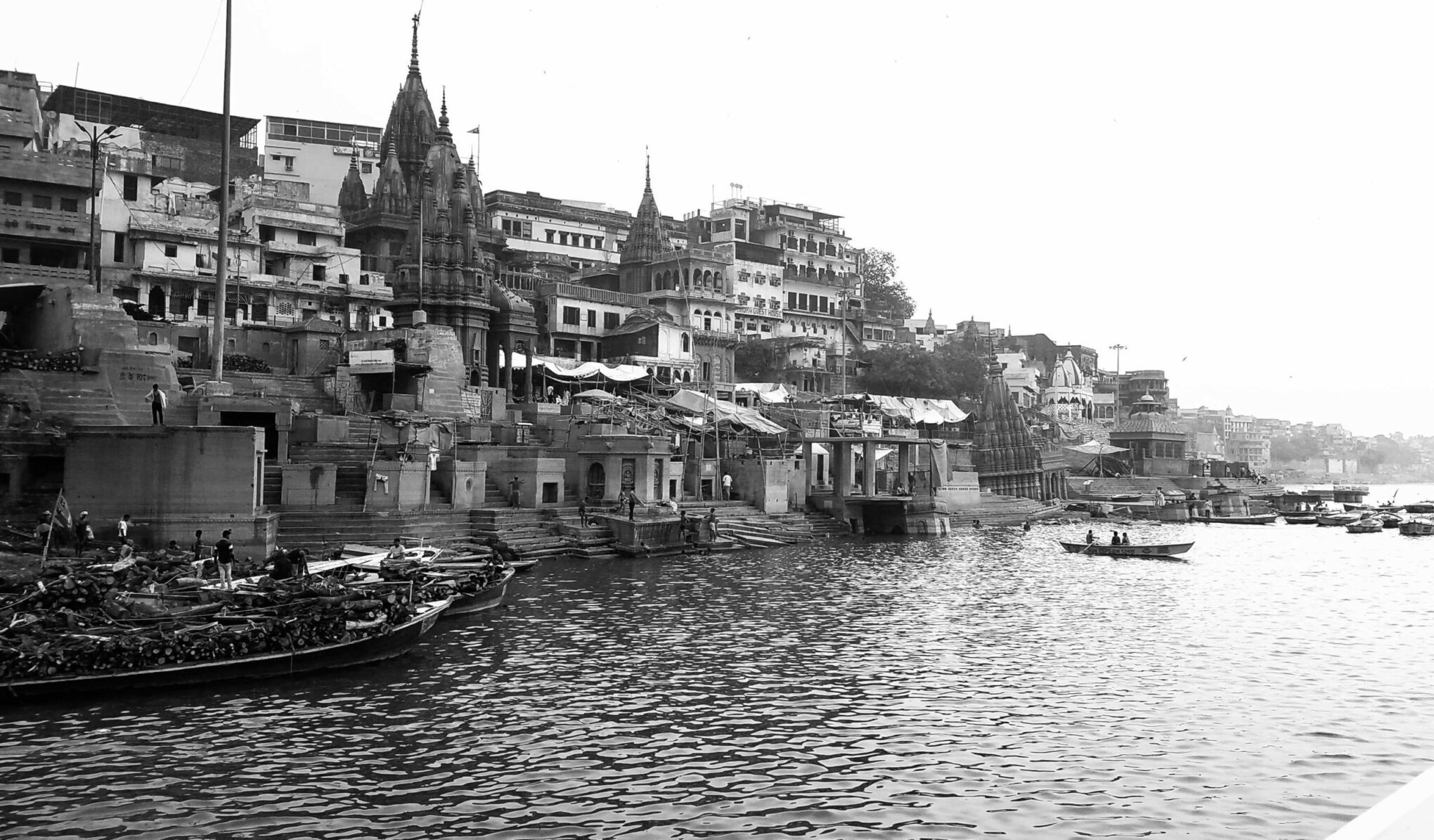Ruchira walks down the memory lane to the Varanasi of her childhood days. An exclusive for Different Truths.

It was the early 1970’s to be precise. As a seven-year-old, I had accompanied my parents, and both sets of grandparents, to the highly exalted pilgrimage town of Varanasi (aka Benaras andKashi).
Indeed, such is the sanctity and significance of this town that in earlier times the devout and the faithful would select this town to breathe their last in. One’s demise here was a surefire passport to heaven. Why? Because this is the abode of Shiva, the last of the Hindu trinity. It is He who plays the pivotal role in destruction so that new vibrant life may spring forth.
Images Etched in Mind
So many decades later there are mainly blurred images etched in my mind…the tortuous twisting, winding lanes by lanes and alleys, so narrow that two medium-sized individuals wouldn’t be able to walk abreast. Piles of garbage. Family homes, kothis, majestic havelis with ornate doorways. The boundary walls with peeling plaster and chipping colour, laced with dust, grime, soot. And yes, in certain quarters, splattered with cow dung cakes drying in the sun.
We found ourselves stumbling across temples and makeshift shrines almost every few yards.
We found ourselves stumbling across temples and makeshift shrines almost every few yards. Nebulous, shapeless stones or rocks – smeared with sindoor (vermilion), flowers and lighted joss sticks placed before them – reposed on chabutras beneath massive shady trees. Devoted passersby would stop for a while, pay their homage, toss a few coins before the deity’s image, and then continue their way.
Speaking of temples, let me add that our family entourage had the privilege of witnessing the grand evening arati at the globally venerated shrine of Lord Shiva or Vishwanath (lit: God of the cosmos). Frenzied clanging of bells, hundreds of lamps blazing simultaneously, conch shells being blown, aromatic smoke screen created by smouldering joss sticks and frankincense, was magnificent to behold! The air was heavily surcharged with faith, devotion, and ecstasy.
Shopping Spree
The following day was taken up by a shopping spree – to procure the legendary Benarasi saris, a sine qua non for Bengali nuptials, besides important social occasions. The resplendent silk fabrics in myriads of breathtaking hues are worth their weight in gold and good value for their fabulous prices. The Aged ‘R’ s gifted saris to my mom, a couple of which were bequeathed upon me, while I was growing up. Lest I forget, I received a delightful gift: a pack of colourful miniature band party musicians carved entirely out of wood. I treasured these for many years.
And in case you are in Kashi, you are bound to make a beeline for the superbly divine Rabdi.
What is shopping without food? And in case you are in Kashi, you are bound to make a beeline for the superbly divine Rabdi. I remember tagging along with the family for the treat. My dad being a notorious sweet tooth took all of us to possibly the best outlet in the area and it turned out to be memorable.

A Microcosm
Through the centuries Benares has earned the sobriquet “City of ghats and temples.” Its numerous ghats form the city’s nerve centre, perpetually vibrating and pulsating – a microcosm of human life! At any of the ghats visitors may witness a flurry of activities… pundits reading palms, making prophecies. Parrots picking cards for tarot readers. Men getting tonsured as part of funeral rites.
Sadhus, ascetics with ash smeared bodies and matted locks occupying secluded spots…
Men and women, their dripping garments highlighting the body contours, wending their way homeward after ablution. Sadhus, ascetics with ash smeared bodies and matted locks occupying secluded spots, being venerated, and offered alms by devotees milling around. The most conspicuous ghats being Dashashwamedh, Panchganga, Manikarnika and Harishchandra Ghats. We stayed at Dashashwamedh Boarding House which, as the name indicates, was barely a few yards away from its namesake. Though old, it was well maintained, neat and clean.
I particularly recall this ghat since we spent a good deal of time here – watching, observing, wallowing in the ambience, letting it seep into us. It was here that I saw my life’s first Ganga Arati, a dazzling spectacle. We also enjoyed the highly popular and scrumptious dahi bhalla-aloo- tikki chaat from the stalls at the venue.
Traumatised Mind
My innocent childlike mind was traumatised by what came next. During an evening ride on a country boat, as we moved gently along the vast expanse of the river waters, I saw scores of corpses – shroud wrapped, tightly fastened with ropes – floating aimlessly downstream… might have come from the Manikarnika ghat, where (reportedly) funeral pyres never die out. It was ghastly to learn that in certain Hindu families, girls who die young are not cremated. Likewise, very poor people often skip cremating their dear departed. Even today, I am unable to forget the horrific sight.
Varanasi has always been a mega crowd-puller – religious, commercial, tourism or otherwise.
Varanasi has always been a mega crowd-puller – religious, commercial, tourism or otherwise. But if I were to speak my mind (without malice to anyone)I’d never go back there again. Admitted things must have changed during the intervening decades …
Visual by Different Truths
Pictures by Anumita Roy







 By
By

 By
By